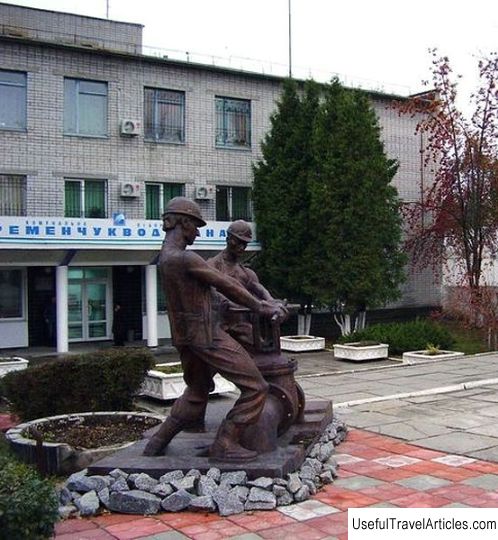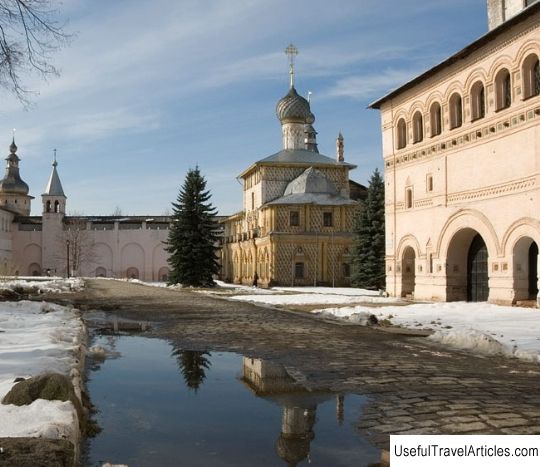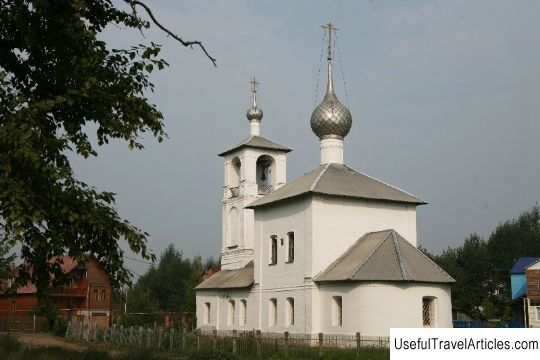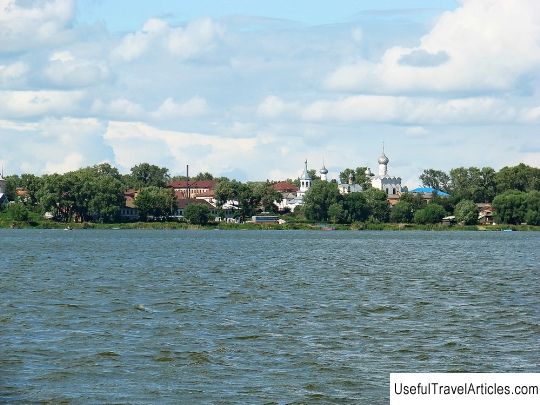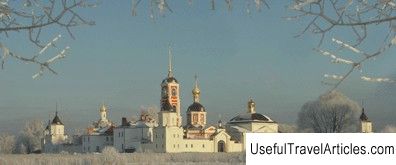Church of Isidor the Blessed on the ramparts description and photos - Russia - Golden Ring: Rostov the Great
Rating: 7,5/10 (100 votes) 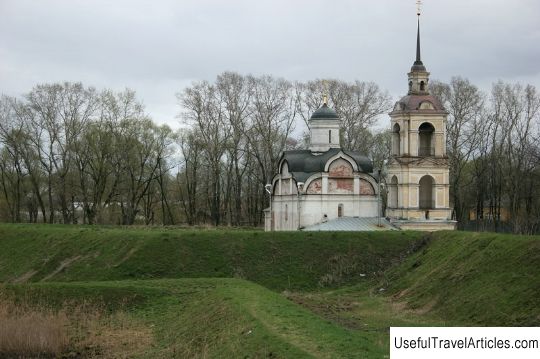
Church of Isidor the Blessed on the ramparts description and photos - Russia - Golden Ring: Rostov the Great. Detailed information about the attraction. Description, photos and a map showing the nearest significant objects. Photo and descriptionThe Temple of the Ascension of the Lord is better known as the Temple of Isidor the Blessed on the ramparts. This structure was built in 1566. The church is one of the most ancient temples that have survived to this day in the city of Rostov. It is known that the Church of Isidor the Blessed is located on the site where Isidor Tverdislov (or Isidor the Blessed), one of the Rostov Orthodox saints, was buried in the past. It was this one, originally from Rostov, that the holy fool died either in 1474 or in 1484 - which is currently unknown for certain. There is information that immediately after his tragic death he was elevated to the title of saint and began to be venerated. Between 1552 and 1563 Saint Isidore was glorified as an all-Russian saint. Its exact origin has not yet been established, but, most likely, it came from Europe. In his life, it was indicated that he belongs to the nation of "Germans", but decided to come to Russia to seek the Truth here. One of the most famous miracles performed by Isidor was the rescue of a merchant from Rostov, who was cruelly thrown into the sea by his companions who betrayed him. After Isidor died, the inhabitants of the city of Rostov decided to bury him in the place where the saint died, namely, at the defensive wall. After some time, a temple was built here, dedicated to this particular saint. Next to this place were buried two more Rostov holy fools, whose names were Blessed Athanasius and Blessed Stephen. The temple that exists today was built on the site of a previously operating wooden church. There is information that the builder of the temple was the master Andrey Maloy, who was a hired worker with the retinue of Ivan the Terrible. The architect worked a lot on Moscow buildings, but today there is still no information about what kind of buildings he made. It is believed that in 1555 Malaya erected the Cathedral of the Epiphany, operating at the Abraham monastery. The church in honor of Isidore the Blessed was built according to the dome-cross type and did not have supporting pillars - that is why the interior space is presented very free, despite the fact that the church itself is absolutely small. The completion of the facade is especially unusual and beautiful - it is three-bladed and has zakomaras of various heights, as well as a zakomar covering, completely restored after restoration work in the 1950s. The wedding of the temple was carried out with the help of one dome with a light drum and a helmet-shaped end restored in the past. The interior of the temple was not previously painted, while the existing frescoes date back to 1721. At this time, the old four-tier iconostasis, which had once been donated to the temple by Ivan the Terrible, was replaced. On the site of the wooden iconostasis, wall paintings were made, which are also presented in the churches of the Bishops' court. All the paintings were made by masters, one might say, with a “speaking” surname - the Ikonnikov brothers. It is worth noting that the paintings they made were very badly deteriorated by later rough updates. The ancient church of Isidore the Blessed, as well as the largest number of temples built between the 15-16 centuries, was subject to global restructuring in the 17-19 centuries. Initially, in the 17th century, a refectory room was added to the church, and then a tent-roofed bell tower. In the 18th century, a somewhat disproportionate and cumbersome onion dome was built, which unsuccessfully replaced the previously existing helmet dome. In the inventory of the Ascension Church, some evidence is highlighted regarding its restructuring: "according to the blessing of the Monk Arseny, in 1786 a side-altar was built, later placed under the cover of God's saint Isidor the Blessed - the Rostov miracle worker" The described side-chapel has not survived to this day, because it was dismantled during restoration work in 1959. The temple was returned to the post-pitched covering, which for a long time remained eight-pitched.
      We also recommend reading St. Michael's Golden-Domed Cathedral description and photos - Ukraine: Kiev Topic: Church of Isidor the Blessed on the ramparts description and photos - Russia - Golden Ring: Rostov the Great. |
